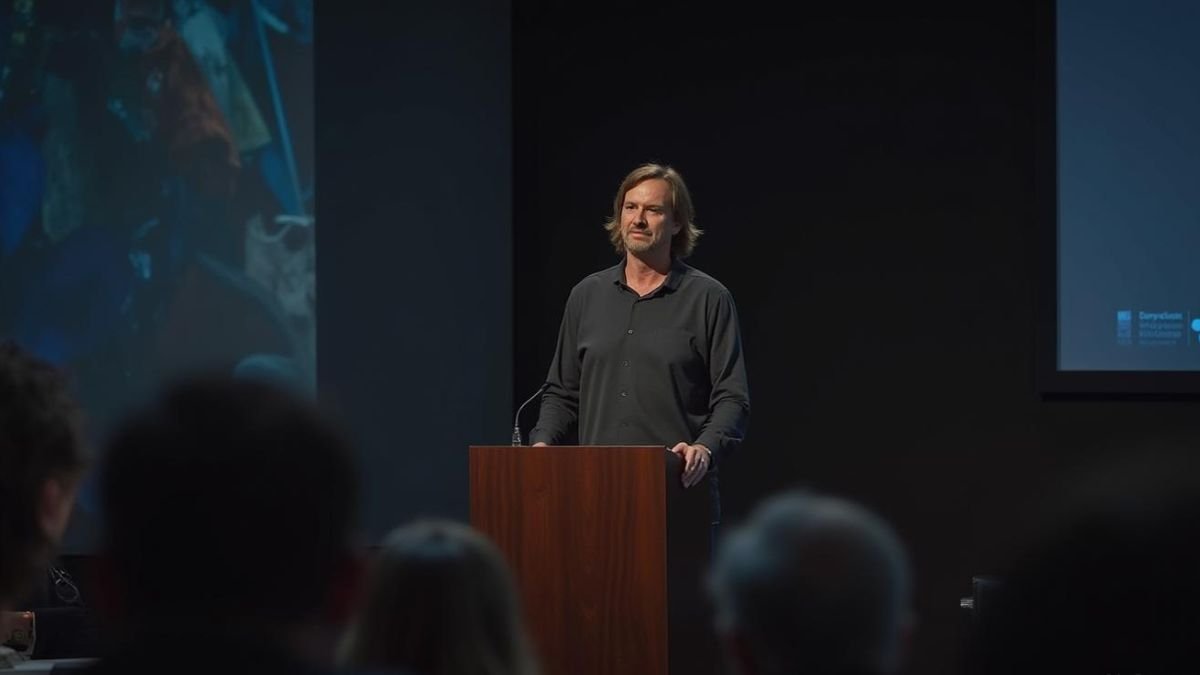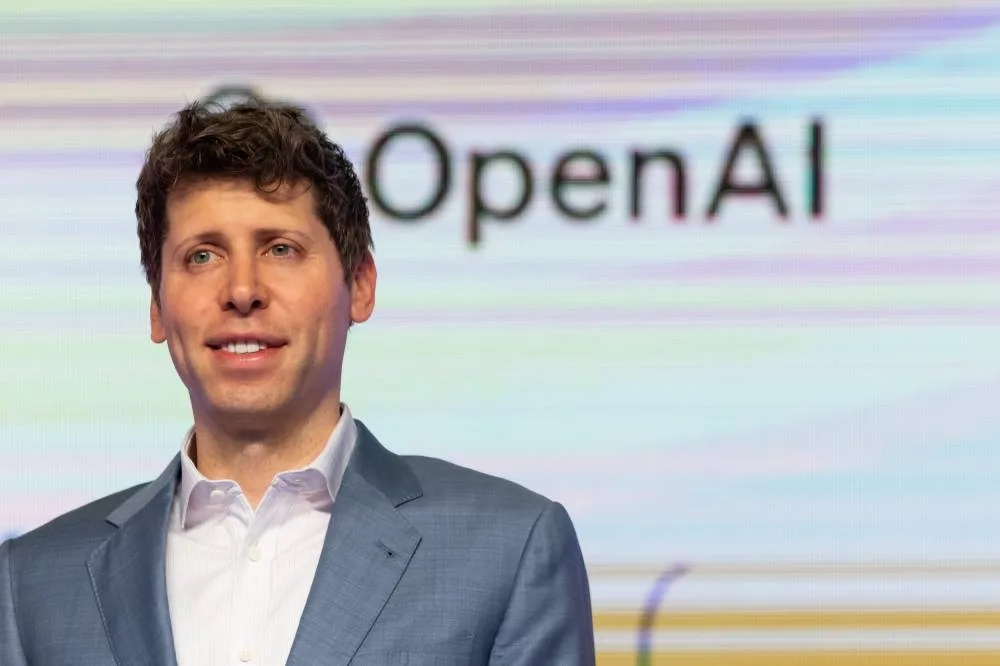Tech
Ripple CTO Confession About Censoring Ozzy Osbourne Sparks Emotional Internet Storm
Ripple CTO David Schwartz admits he faked fan questions and censored Ozzy Osbourne during a Q&A session and now calls it one of his biggest regrets

In a heartfelt and unexpected confession, David Schwartz, the Chief Technology Officer of Ripple, has admitted that he once censored Ozzy Osbourne and faked questions during what was intended to be a real-time Q&A session with fans of Black Sabbath. The revelation came via a post on X (formerly Twitter), just days after the legendary rock icon Ozzy Osbourne passed away at the age of 76.
The Ripple CTO shared that the incident occurred during his tenure at WebMaster, a company where he was tasked with facilitating a fan conference using the firm’s ConferenceRoom software. His role? To listen to band members over the phone and type their responses live as fan questions were asked — except that’s not what really happened.
I cheated,” Schwartz confessed. “To me personally, it was a failure, but to everyone else it was a success.
Fans Only Wanted Ozzy
According to Schwartz, it became obvious very quickly that fans only cared about Ozzy. “Every question was for Ozzy,” he said, noting that he even asked moderators to steer questions to other band members — but there simply weren’t any.

To avoid leaving the rest of the band out, Schwartz said he began using a list of pre-written canned questions. These questions had been prepared in case of technical glitches but ultimately served as filler to make it appear that the other band members were getting engagement.
I passed a canned question to each of the other band members in rotation. And I mixed what I could make out of what they said with the canned answer from their manager.
The Ripple CTO said that while the event appeared to go smoothly to the audience, internally he felt it was a complete failure — primarily because it lacked the authenticity and fan engagement that had been promised.
Cleaning Up Ozzy’s Language
The confession didn’t end there. Schwartz went on to reveal that Ozzy Osbourne’s responses were heavily laced with profanity, particularly the C-word — and not the mild kind.
Ozzy’s answer featured the C-word a lot. The bad C-word. The one that Americans really don’t like to say. It was pretty close to the only word I could hear clearly.
Given the poor call quality and the explicit content, Schwartz admitted to censoring Ozzy’s language as he typed out the responses, which meant fans weren’t hearing the raw, unfiltered Ozzy that they likely expected.
A Moment of Regret and Reflection
Now, in the wake of Ozzy Osbourne’s passing, Schwartz says he regrets the inauthentic exchange more than ever. What was meant to be an opportunity for fans to connect with a musical legend was instead a scripted, sanitized interaction.
It wasn’t the authentic interaction with celebrities that I wanted it to be and that I tried to make it,” he wrote. Only “two or three” legitimate questions ever made it to the band.
This bittersweet confession adds an emotional layer to the outpouring of tributes for Ozzy, who was a cultural icon in both music and pop culture. Known for his wild personality, dark humor, and groundbreaking contributions to heavy metal, Osbourne’s legacy continues to resonate across generations.

Memecoins and Market Reactions
Interestingly, Ozzy’s death also had an impact on the crypto space. A memecoin titled The Mad Man (OZZY) surged over 16,800%, reaching a price of $0.003851 and pushing its market cap to $3.85 million, according to a report by Cointelegraph.
It’s unclear if Schwartz’s confession will impact Ripple’s brand perception, but his honesty has certainly sparked discussions around authenticity in digital interactions and celebrity engagement.
In the end, the Ripple CTO’s admission isn’t just about an old chatroom mishap. It’s about the desire to do right by artists and fans — and a reminder that, even in tech-driven spaces, authenticity matters.
Crypto
16 Day Surge Spot Ether ETFs Add 453 Million in Inflows and Investors Say This Is Just the Beginning
Spot Ether ETFs continue their explosive streak with $453 million in inflows led by BlackRock as bullish momentum shows no signs of slowing

In an unprecedented run that has crypto bulls cheering, spot Ether ETFs have now notched their 16th consecutive day of net inflows, with Friday alone contributing a staggering $452.72 million, according to fresh data from SoSoValue. The bulk of that came from BlackRock’s iShares Ethereum Trust (ETHA), which alone pulled in $440.10 million, pushing its total assets under management to an industry-leading $10.69 billion.
The cumulative momentum of spot Ether ETFs has propelled total net assets across all U.S.-based funds to $20.66 billion, now representing 4.64% of Ethereum’s total market cap. With cumulative net inflows reaching $9.33 billion since their launch, Ether ETF adoption is clearly gathering pace—particularly among institutional investors betting big on Ethereum‘s long-term utility in DeFi, staking, and smart contracts.

With surging interest in stablecoins and tokenization, we expect strong ETH ETP inflows for a long time to come,” noted Matt Hougan, Chief Investment Officer at Bitwise, on X earlier this week.
BlackRock Dominates While Grayscale Lags
While BlackRock continues to dominate the leaderboard in the spot Ether ETF landscape, Bitwise’s ETHW trailed far behind with $9.95 million in inflows. Fidelity’s FETH also added a modest $7.30 million. On the flip side, Grayscale’s ETHE saw continued redemptions, logging a $23.49 million net outflow on the day, bringing its cumulative losses to a staggering $4.29 billion.
This divergence in performance among issuers is becoming increasingly pronounced, as investors flock toward more transparent and lower-fee funds offered by BlackRock and Fidelity, while older legacy products like Grayscale’s ETHE lose their shine.
Institutional Demand Outpacing Supply
What’s driving the surge in spot Ether ETFs? Experts say it’s a mix of improved regulatory clarity, Ethereum’s growing dominance in decentralized finance, and a belief that ETH will play a central role in future tokenized financial systems.
Matt Hougan estimates demand for Ether via ETFs and other exchange-traded products (ETPs) could reach $20 billion in the coming year, equivalent to 5.33 million ETH at current prices. That’s particularly significant when compared with Ethereum’s estimated issuance of just 0.8 million ETH in the same time frame — a mismatch that could lead to a supply squeeze.

We’re looking at a scenario where demand may outpace new ETH issuance by nearly 7X, said Hougan.
Spot Ether ETFs Outshine Bitcoin Counterparts
While spot Bitcoin ETFs also posted a rebound with $130.69 million in net inflows on Friday, they trailed Ether funds significantly. Bitcoin ETFs had seen three consecutive days of outflows earlier in the week totaling over $285 million, suggesting some rotation of investor interest toward Ethereum-based products.
Despite this, the cumulative total for spot Bitcoin ETF inflows remains higher, at $54.82 billion, with total net assets standing at $151.45 billion.
However, recent enthusiasm and performance metrics clearly favor spot Ether ETFs, especially as Ethereum’s broader use case continues to attract forward-thinking institutional players.
Will the 16-Day Streak Continue?
With daily inflows still going strong — including peak days like $726.74 million on July 16 — analysts are watching closely to see just how long this bullish streak in spot Ether ETFs can last. Since the streak began on July 2, total net inflows have more than doubled from $4.25 billion to over $9.33 billion.

And with Ethereum’s upcoming ecosystem upgrades, including developments around Layer 2 scaling, restaking, and more robust institutional-grade staking solutions, there’s reason to believe that investor appetite for spot Ether ETFs is far from satisfied.
Final Thoughts
This historic 16-day streak in spot Ether ETFs not only highlights a turning point in crypto investing but also shows how Ethereum’s evolving role in finance is driving real-world demand. While BlackRock leads the charge, the entire industry appears to be gaining ground in reshaping traditional portfolios.
If this trajectory holds, 2025 might just be the year Ethereum goes fully institutional.
Business
1-Tesla’s Earnings Vanish From the Conversation as Elon Musk Talks Robots and “Someday Soon” Dreams
With profits plunging and sales collapsing, Elon Musk dodges hard questions in Tesla’s earnings call — and Wall Street is finally noticing

On Wednesday night, Tesla released its second-quarter earnings report, and by Thursday morning, its stock was down over 8%. The reason? Crashing car sales, shrinking profits, and looming federal tax credit cuts. But you wouldn’t know any of that if you only tuned into the company’s investor call.

In an hour-long earnings call that barely mentioned the word “earnings,” Elon Musk steered the narrative toward Tesla’s future as an AI and robotics empire, not its present-day struggles as an automaker. Musk painted a grand picture of humanoid robots, robotaxis, and a sci-fi-style future where Tesla isn’t just building cars — it’s revolutionizing technology.
“We’re in a weird transition period,” Musk admitted during a brief moment of candor, referencing the upcoming loss of the $7,500 federal EV tax credit and vanishing regulatory credit sales — both key profit drivers for the company.
But that was it. The rest of the call was a futuristic detour. Analysts asked about Full Self-Driving, the Optimus robot, and other projects that still live more in concept than in consumer garages. Meanwhile, the elephant in the room — Tesla’s collapsing sales and shrinking margins — was quietly ignored.

And Wall Street noticed.
“The company offered remarkably little detail on some of the most important factors,” said William Stein of Truist, expressing concern that the outlook now depends more on imagination than realistic numbers.
Even Dan Ives, a longtime Tesla optimist from Wedbush Securities, expressed disappointment.
“It wasn’t a Hall of Fame call,” he told CNN, admitting that “communication was less than stellar.”
And still, Musk kept talking about the future. A future where Tesla sells millions of Cybertrucks, a future where cars drive coast to coast without human input, and a future where robots handle everyday tasks.
“Someday soon,” Musk implied again and again — without concrete timelines or deliverables.
The irony? Tesla’s stock valuation — still one of the highest in the world — depends heavily on those very promises. That’s what makes investors nervous. As Gordon L. Johnson, one of Tesla’s most vocal critics, put it:
“The key to convincing the market you’re not just a car company is to avoid discussing your car business… If you’re trying to justify a trillion-dollar valuation while your core business stagnates, it helps to keep the details as fuzzy as your timeline.”
And fuzzy, it was.

While sales continue to slide and profit margins shrink for the third consecutive quarter, the conversation has shifted from earnings reports to sci-fi storytelling. But investors are starting to question how long that strategy can hold.
“Tesla has stopped being a car company that talks about technology,” one analyst noted. “It’s now a tech dream that avoids talking about cars.”
This transition might excite futurists, but for shareholders who are watching red numbers on earnings sheets, it raises tough questions:
wall Street’s sharp selloff suggests the market is growing impatient with promises without performance.
For a company that once revolutionized electric vehicles, Tesla now risks being seen as more hype than hardware.
Investors are increasingly demanding transparency and tangible results, not just ambitious tech forecasts.
Even longtime believers are starting to ask: How long can Tesla ride on “someday soon”?
As profits decline and competition from legacy automakers heats up, the pressure is mounting.
Meanwhile, the public still hasn’t seen the affordable Tesla that’s been teased for years.
Without clearer answers, Tesla’s dream of being an AI-first company may be a tough sell on the trading floor.
Investors don’t just want vision — they want viability.
And right now, Tesla’s balance sheet tells a different story than Musk’s microphone.
Until the company bridges the gap between imagination and execution, confidence may continue to erode.
For more Update http://www.dailyglobaldiary.com
Tech
Sam Altman Sounds Alarming AI Fraud Warning at Fed Conference: “Very Soon… It’s Coming”
OpenAI CEO warns that digital voice ID could be exploited to steal massive sums of money as deepfake technology races ahead of financial safeguards

In a moment that rattled the room at a Federal Reserve conference in Washington, D.C., Sam Altman, CEO of OpenAI, didn’t mince words: “I am very nervous that we have an impending, significant fraud crisis.”

Altman made the stark prediction while addressing an audience of Wall Street executives, regulators, and cybersecurity experts at a high-level panel moderated by Michelle Bowman, the Fed’s Vice Chair for Supervision. His message? Voice authentication technology is on the brink of being weaponized by bad actors using AI.
“Some financial institutions accept digital voice ID to authorize massive money transfers,” Altman said. “And some bad actor is going to release a fake authentication tool—it’s not a super difficult thing to do. This is coming very, very soon.”
Table of Contents
AI Deepfakes Are No Longer Just Visual
While most headlines about deepfakes have revolved around video content, a growing number of experts say that AI-generated audio is the next—and arguably more dangerous—frontier.
In June 2024, the Association of Certified Fraud Examiners (ACFE) published a report highlighting how artificial intelligence can now mimic a person’s voice with terrifying accuracy.
“These tools analyze speech patterns, tone, and cadence,” the ACFE wrote. “With a few minutes of someone speaking, AI can generate a voice clone nearly indistinguishable from the real person.”
This opens the door to a nightmare scenario where fraudsters trick voice authentication systems at banks or brokerages by cloning someone’s voice to approve transactions worth millions.

AI Is Speeding Up Cybercrime—and Outsmarting Security Systems
Altman’s warning isn’t theoretical. At the 2025 RSA Conference in San Francisco earlier this year, tens of thousands of cybersecurity professionals and tech leaders met to discuss how AI is both the biggest threat and best defense in today’s digital landscape.
McKinsey & Company reported during the event that hackers are now using AI to launch cyberattacks within minutes, crafting realistic phishing emails, fake websites, cloned audio, and malicious prompts that bypass traditional security filters.
“AI tools allow cybercriminals to craft personalized, realistic messages and methods at an unprecedented scale,” McKinsey wrote in its May 2025 blog post. “It’s the greatest threat—and defense—in cybersecurity today.”

What Are Regulators Doing to Stop AI Impersonation?
The Federal Trade Commission (FTC) is trying to get ahead of the curve.
In 2024, the FTC finalized a new anti-impersonation rule aimed at combating voice and identity spoofing. More recently, it launched a “Voice Cloning Challenge” to crowdsource ideas and technologies to detect and block unauthorized voice cloning attempts.
Still, experts warn that regulation is lagging far behind innovation. While companies like OpenAI are calling attention to the issue, there is no federal standard for AI-generated voice security.
“It’s a cat-and-mouse game,” said one cybersecurity executive. “The fraudsters move faster than legislation can.”
Why This Should Worry You
The most chilling part of Altman’s message is how easily scalable these frauds could become. Unlike traditional cyberattacks that require hacking skills, AI-powered fraud doesn’t need elite technical knowledge—just access to public voice recordings and off-the-shelf AI tools.
Think about it: your voice on a podcast, a TikTok video, or even customer service calls could be captured and used against you.
As banks, fintech apps, and even government services explore biometric voice verification, the lack of AI-proof safeguards could lead to an explosion of fraud cases affecting millions of consumers.

What’s Next?
Altman believes that unless strong action is taken now, we’re headed straight into an era where trust itself becomes the greatest casualty.
+
“There’s no question about the power of this technology,” Altman said. “The only question is whether we’ll be ready for what it brings.”
It’s a warning that tech companies, regulators, and financial institutions can no longer afford to ignore. Because in the AI arms race, fraud isn’t coming—it’s already knocking.
For more Update http://www.dailyglobaldiary.com
-

 Weather3 days ago
Weather3 days agoGilbert Weather Forecast Turns Volatile Heat Advisory and Storm Watch Issued
-

 Entertainment3 days ago
Entertainment3 days agoOzzy Osbourne dies at 76 after final concert with Black Sabbath fans say It finally caught up with him…
-

 Sports6 days ago
Sports6 days agoRicky Ponting once said “I learned from the best” but who were Australia’s 5 greatest cricketers ever?
-

 World News3 days ago
World News3 days ago1-Iran Issues Dire Warning to Israel and Defies Trump on Nukes: “We’re Ready to Strike Deep Inside”
-

 News1 week ago
News1 week ago5 Most Impressive Richest Countries in 2025 Ranked by GDP Per Capita You Didn’t Expect at Number 3
-

 Entertainment1 week ago
Entertainment1 week agoEmma Watson Banned From Driving After Speeding Offences Shock Fans in 2025
-

 Entertainment1 week ago
Entertainment1 week agoColdplay CEO Scandal Shocks Tech World as Viral Jumbotron Clip Forces Astronomer Chief on Leave and Sparks 7 Unbelievable Reactions
-

 Cricket1 week ago
Cricket1 week agoTop 5 Fastest Bowlers in Cricket History Who Delivered Blazing Thunderbolts that Shocked the World























